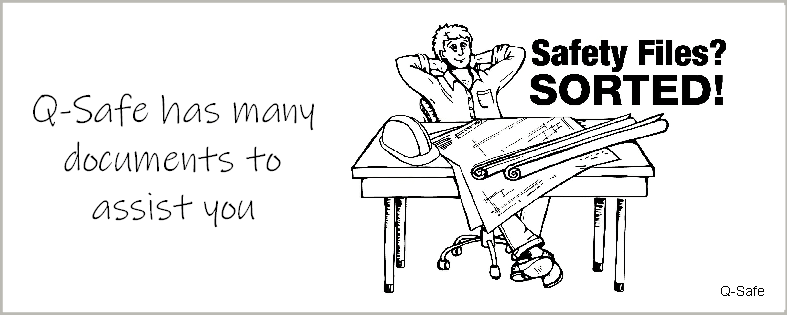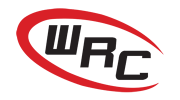
What is a safety file?
A safety file is a collection of documents that will demonstrate to Clients and Principal Contractors that you can perform your task safely on their site. And, that you have suitable safety systems in place.
Remember, a head contractor is responsible for the safety of everyone on the project. They need to make sure you have enough safety systems in place.
How can we help you?
We supply a safety file software package called Q-Safe, which for the last 7 years has been helping people set up their safety files quickly and correctly.
In preparing a safety file, make sure it is ‘site specific’. This means it must focus on the project task you are about to perform. This is not a look at your company’s general safety – although that will be included.
First steps to make a safety file
The first step is to look at the task and establish what hazards and risks you are likely to find. Once the hazards are identified, determine how you are going to perform the task in a safe manner.
There are many questions to consider. e.g.:
Who is going to do what, and is that person suitably trained and competent to perform the task?
A safety file will also let the client/contractor know who is in charge, and who is responsible for what, so we need to appoint a responsible person to a range of different roles, as stated by the Health and Safety Act.
What equipment and tools will be used?
Do you have written ‘Safe operating procedures’ for each of the tools used?
Have you documented a safe way to perform the task? More importantly, has this all been communicated to the workers involved?
Read the blog on Method Statements to see some more questions that should be considered.
Training is very important in reducing the chances of accidents, so you need to have ‘Toolbox talks’ with your workers, who need to sign a confirmation that you have done this and that they understand.
Q-Safe has a big selection of Toolbox Talks for you to choose from. Typically, a ‘Toolbox Talk’ will only last about 10-15 minutes.
There is a range of registers that need to be included to make sure all tools and equipment are correctly recorded before going to the site.
When preparing a safety file, include a detailed ‘Safety Plan’ that will cover 45+ different components that need to be considered. If you need a safety plan only, we can help.
View all the safety documents
Check out the full list of Safety File Documents. You don’t need them all. We will show you the commonly used documents. Only select those needed.
Your safety file will also include your company policies (which are generally NOT site-specific). This will include Health and Safety Policy, Drugs and alcohol policy, Covid policies and procedures. You will also need to state waste and housekeeping policies and procedures, vehicle policies, etc.
When preparing the safety file, read it carefully, and make sure only site-specific data is included. e.g. If you are not working at height, do not include work at height details.
Communicating the safety file
Once prepared, it is important to communicate the content to all involved with the project.
Then, get those workers to sign acknowledgement that they understand the contents.
At the time of tender, the contractor should have presented you with their overall site risk assessment and safety requirements.
Make sure your safety file will comply with their requirements.
Why use Q-Safe?
Q-Safe is a computer software system designed specifically for South African use, and ties in with common practice for creating safety files.
We have detailed VIDEOS to help you setup your system. Use Q-Safe and get your safety file set up quickly. And, once done, setting up your next one can be done in a fraction of the time.
We can also set it up for you.
Call us if you have questions.
Did you know that Q-Safe can setup a file for you for only R3000 ?
We do all the hard work. Single project only. Online data submission. SETUP SPECIAL R3000






